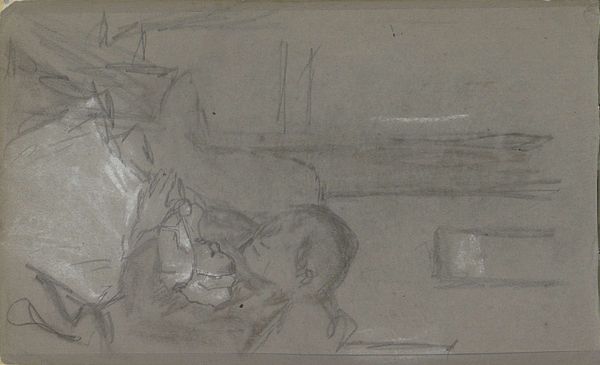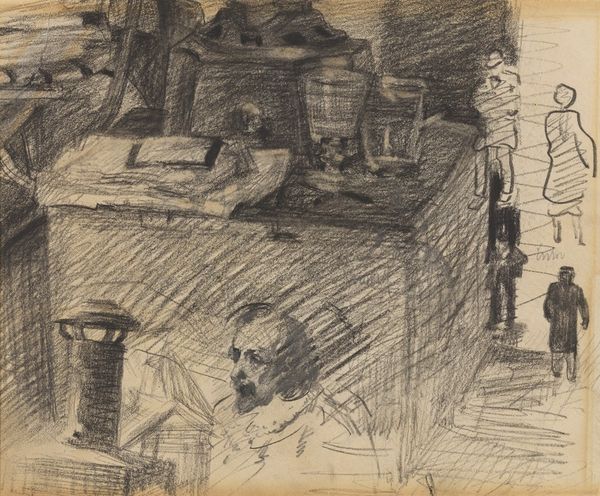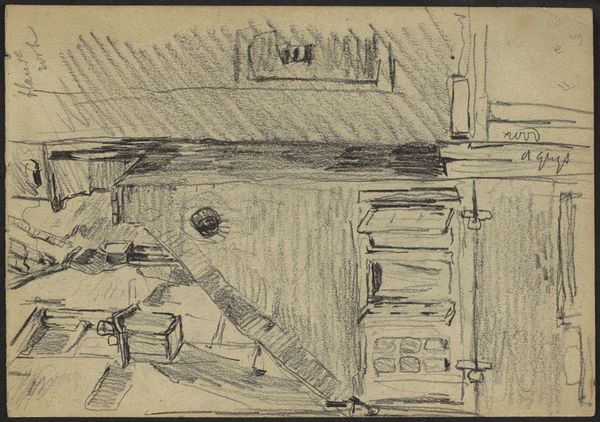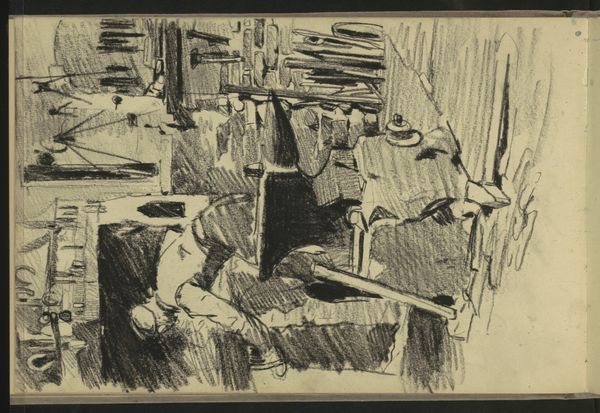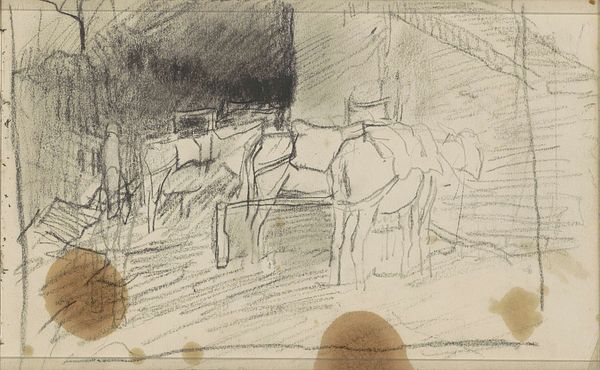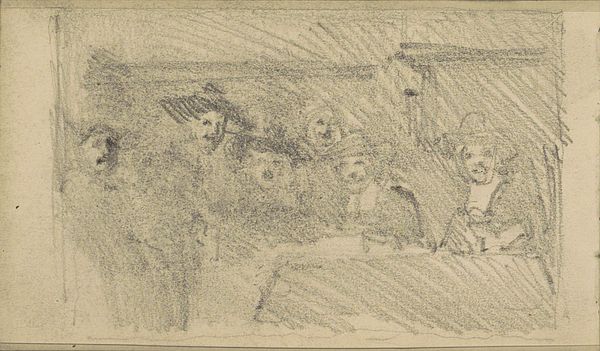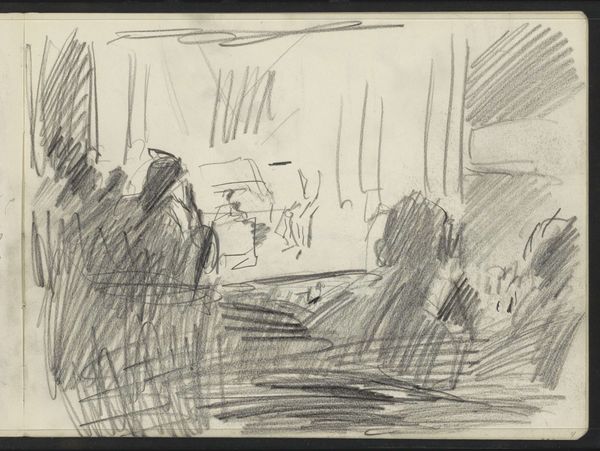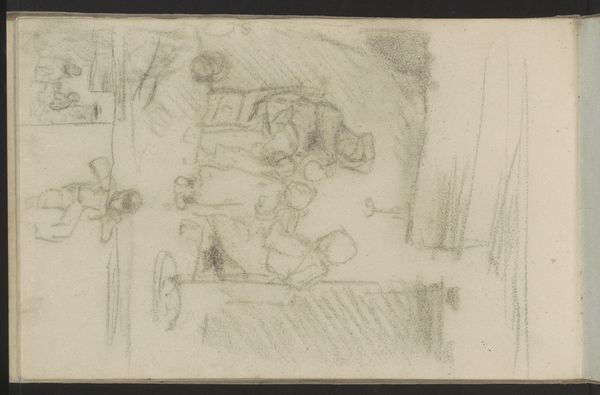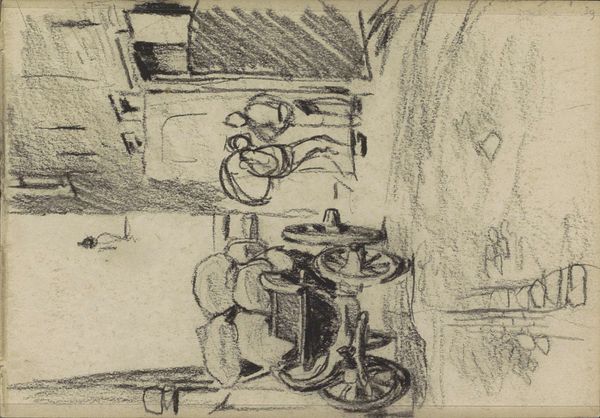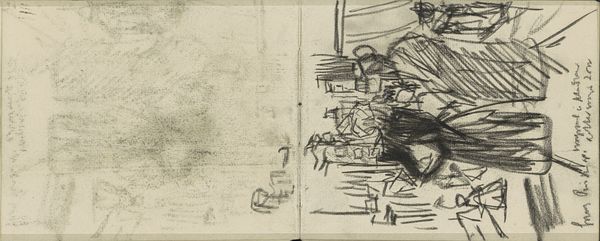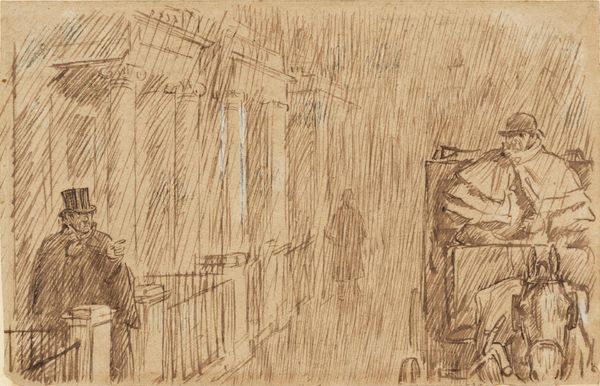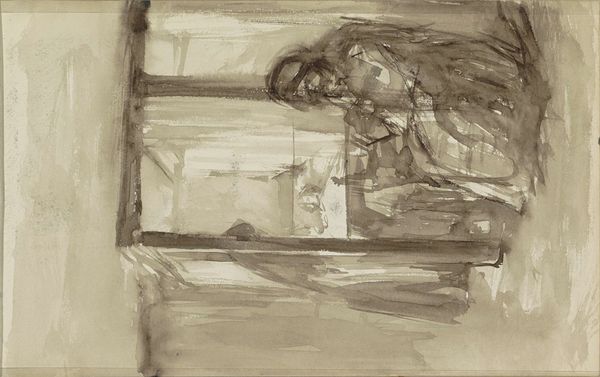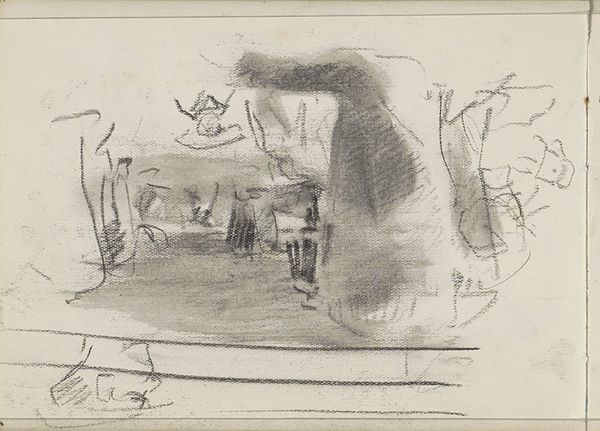
Copyright: Rijks Museum: Open Domain
Editor: This drawing by Isaac Israels, "Figuren aan een tafel in een interieur," which translates to Figures at a Table in an Interior, sketched somewhere between 1886 and 1934, has a wonderfully intimate and casual feeling. What is your take on this particular sketch? Curator: It's interesting to consider this work through the lens of materiality. Notice the visible texture of the paper itself and the immediate marks left by the pencil. Israels isn't presenting a finished, polished product. Instead, we're given access to the artist's process, to the labor of creating the image. Think about where he sourced these materials: paper and pencil were tools, commodities even, enabling the making of this artwork. Editor: That's fascinating. It really does feel like we're looking at a page from a personal sketchbook rather than a formal portrait. Does that make it less valuable or important? Curator: Not at all. The supposed "incompleteness" is precisely where the value lies for me. It dismantles hierarchies. Instead of elevating the 'artistic genius' working divinely, we're reminded of the mundane reality: the artist making marks on a readily available surface. Furthermore, consider the setting depicted: figures around a table. What social interactions are being facilitated? What kind of labour might be involved in maintaining that space? How does Israels present that relationship through his sketching? Editor: I see what you mean. By focusing on the materials and the social scene represented, we gain a new perspective on what might otherwise seem like just a simple sketch. It feels much more grounded, like a slice of everyday life. Curator: Exactly. By understanding the artwork within its material and social contexts, it enables us to move beyond purely aesthetic judgments. Instead, it makes us contemplate labour, exchange and the construction of value. Editor: This makes me think about all the hidden labour that goes into creating any artwork, and how easily that gets overlooked. Thank you! Curator: And it is a useful exercise to consider not just "high" art, but the craft and the consumption that occurs around it. Something I will consider moving forward as well.
Comments
No comments
Be the first to comment and join the conversation on the ultimate creative platform.
